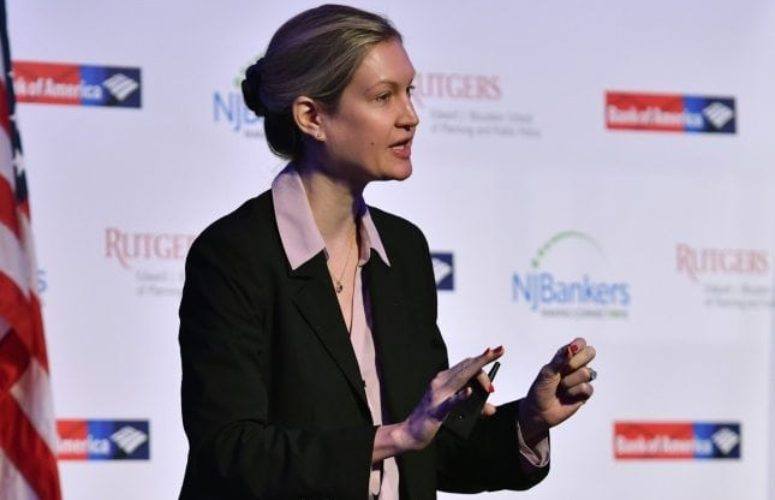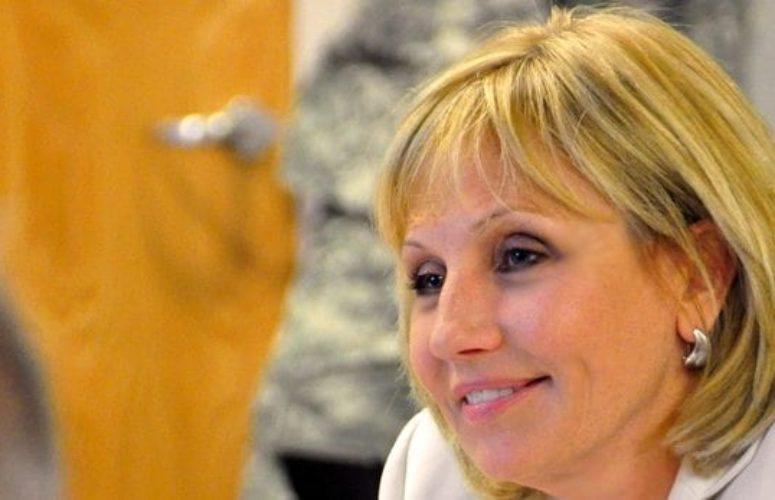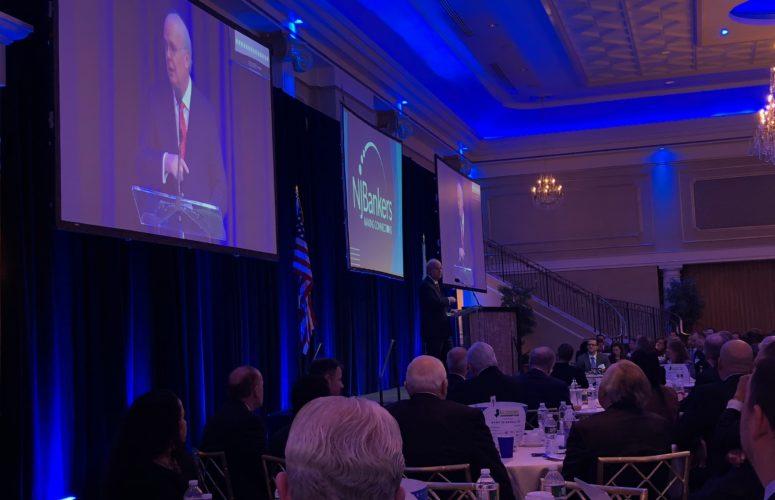
New Jersey, the National Economy, and Federal Tax Reform
NJBankers event highlighted critical issues affecting the economy.
By George N. Saliba, Managing Editor On Jan 22, 2018With so much attention focused on New Jersey’s new governor and his policies, it is perhaps easy to forget that the Garden State operates against the backdrop of not only national trends, policies and economic forces, but a broader and especially unpredictable global arena. Chief Economist Lindsey Piegza, Ph.D., of Stifel Financial Corp., provided a panoramic view of the nation’s economy at the NJBankers Economic Leadership Forum, held Friday at The Palace at Somerset Park, Somerset.
She stated, “We are not talking about an overly robust [economic] recovery, or a really aggressive economy, but a stable economy. Good enough, certainly, for the Fed to continue to move along this gradual pathway of higher rates.”
She later said the equity markets are “elated” by the idea of tax reform, fiscal stimulus, and a moderate economy, “because it is a win-win for the equity markets, at least in the near term. But, longer term, we would expect the underlying economy to show significant upward momentum, justifying current levels in the marketplace, or we would expect a sizable correction back down to reality, reflecting a 2 percent economy, and a potential 2 percent economy going forward.”
Earlier in her presentation, she said that the “risk of recession is rapidly increasing, as the recovery becomes increasingly long in the tooth.” The labor market in 2015, for example, had added some 250,000 jobs per month, and then it slowed to 230,000/month, then 200,000/month, and, now, approximately 170,000/month. Piegza said an overall recurring theme in her presentation is that economic growth is slowing.
And while the unemployment rate of 4.1 percent is impressive, it does not reflect millions of Americans who are no longer actively seeking employment, and are thus not tabulated in related calculations. It is not just near-retirement age people, Piegza said, who are idle, but rather 20- and 30-somethings who are not looking for work. She added, “We expect them to come back into the labor market at some point, eventually putting upward pressure on the unemployment rate.”
Consumers, for their part, have been able to maintain a modest level of expansion, and one factor in that equation is lower gasoline prices. Piegza added, however, that, “In order to sustain the consumer long term … we need organic job and income growth.” Income levels are somewhat modest.
Business investment, meanwhile, has increased, with positive growth for three consecutive quarters, although there has been – as Piegza explained – “some waning momentum.” Additionally, in what might be described as a paradox, companies are investing in automation technology that can assist with productivity, but, cautioned Piegza, “automation would also serve to perpetuate a very stagnant labor market condition that we just talked about, particularly in terms of a wage and price spiral.”
The much talked about topic of inflation has actually been under 2 percent for 21 of the past 25 years, and Piegza said, “The Fed is concerned that the inflation drag is lurking around the corner, while history tells us there really is no reason to be concerned, at this point, particularly in this still very moderate pace of the current US recovery.”
The nation’s debt levels are, however, at 77 percent of GDP, which she said is “the highest level of debt we have seen in this country relative to the size of the economy in the history of tracking the federal government’s balance sheet, save for a short period in the aftermath of World War II.” Piegza reminded the audience that in the late 1940s and early 1950s, the nation was embarking on a decade-long expansion of 4.5 percent GDP growth.
She added, “This time around, we are talking about 2-ish. So, we really can’t grow ourselves out of this, at this point. And you can’t talk about federal debt without talking about net interest payments … payments will increase three-fold.”
U.S. Secretary of Commerce Wilbur Ross
U.S. Secretary of Commerce Wilbur L. Ross, Jr. joined the event via live teleconference, and offered input on an array of topics, although people seemed most interested in his comments on the effects of recent federal tax reform. Ross said, in part, that three quarters of the United States population will be receiving lower tax rates than they had been before, and “those will start showing up in the paychecks, in February.”
He added that, “No matter what the newspapers [print] about the plan, it is very hard to misrepresent things to somebody who is just getting more cash in his [or her] pocket, as a result of [the tax reform]. Now, I know in New Jersey, your association (NJBankers) campaigned actively against the constraints of the state and local tax limitations [in the plan], but I would suggest to you that the way [the limitations] finally came out, with being part of the cap, probably doesn’t affect as many people, very adversely. I think [it will hurt] just under 1 percent of the population [in New Jersey] with incomes of $500,000, or more, and that constitutes something on the order of 20 percent of the personal taxes collected.
“There is another group of people in $200,000 to $500,000 category, and they are also around 20 percent of your taxes. So, something around 40 percent of New Jersey’s personal income taxes are people where the cap on total deductions may well mean that it works a bit adversely for them. That’s an unfortunate consequence of [the plan]. [I] realize that the reason you worry about it, particularly, is that New Jersey has had a big problem with outward-bound emigration from New Jersey to other areas.
“And there may well be some [modest increase of that in the] high brackets, coming from the new tax law. But, so many people were affected already by the alternate minimum tax, which, as you know, goes away, that I don’t think the damage will be as severe as some media make it out to be. And, in any event, it is the law of the land, so we are all going to have to figure out how to live with it.”
The NJBankers event featured nearly 20 speakers and/or panelists overall, and lasted from 8 a.m. to approximately 2 p.m., with three mid-day “breakout” sessions.
Related Articles:





